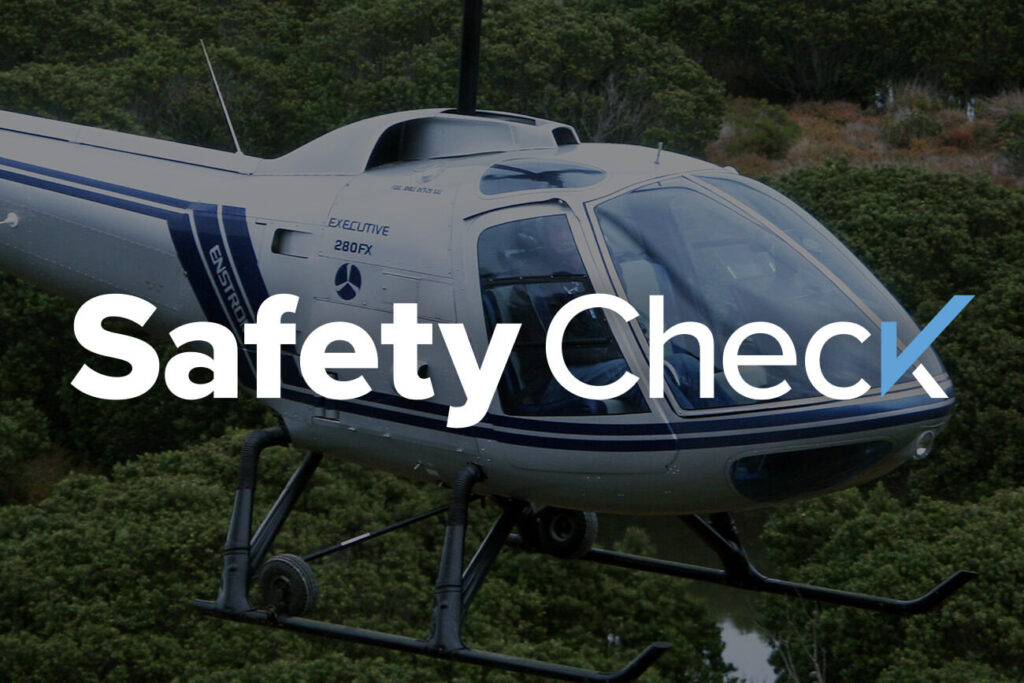Safety Check: What’s the Secret to Turbine Time?

Even full-time pilots might find themselves baffled by the catch-22 of logging rotorcraft turbine time.
In order to affordably acquire turbine time, you need to have logged hundreds of hours already. Last month at Rotors ‘n Ribs, an experienced pilot, who recently discovered his love for helicopters, asked me if I knew the secret to overcoming this conundrum.
I wish I could tell you I did. There is no perfect solution. But after reaching out to friends in the industry, I can tell you the pros and cons of the different methods you might choose to build up your turbine time.
Jason Cutter owns Venture Helicopters, a helicopter flight training business in Frankfort, Indiana. He believes the insurance industry places undue scrutiny on lower time pilots out of a mistaken belief that turbine helicopters require super-human ability to control.
To be fair, the extra power from a turbine compared to a piston can be a bit tricky to navigate, but Enstrom CCO Dennis Martin insists that this extra power is a boon to pilots, offering more options and more margin. Other benefits of a turbine engine include a bigger fuel tank, more consistent fuel burn, and a governor to maintain engine speed.
Cutter points out that, if it were true turbines were the more difficult to fly, and turbine pilots with less experience were disproportionately doomed to fail, you’d expect to see that in the crash data, right? While it’s by no means a scientific sample size, the NTSB’s ten most recent turbine helicopter accident reports tell a different story.
- H125 (1000 TT/900 type)
- EC135(2100 TT/80 Type)
- Hughes 369 (10,000 TT/220 type)
- OH58 (1900 TT/600 Type)
- Hughes 369 (6500 TT/1000 type)
- Hughes (10600TT/1200 Type)
- Bell 407 (4500 TT/700 type)
- AS350 (15300 TT/9500 Type)
- AS350 (3200 TT/500 type)
- AS350 (3800 TT/3000 Type)
Notably, several of these accidents, including the one from the pilot with only 80 hours in type, were “wildlife encounters.” Birds don’t discriminate based on who is sitting in the PIC seat. However, the unfortunate truth is, less than 100 hours in type will still raise some red flags with your insurance provider.
To escape insurance premium purgatory, Cutter outlined several solutions for building up turbine time. The first, you could pay $800 – $1,200 an hour to fly a short cabin light turbine single with an instructor, but only if you are fortunate enough to find one in the same state as you. Second, you could buy your own turbine-powered helicopter and fly it for half of the going hourly rate, but only if you don’t insure it and spend sleepless nights praying a bird doesn’t take aim at you. Either way, you’re investing a significant chunk of change.
Some people can leverage their relationships to arrange ride-alongs with a more experienced turbine pilot. If your goal is just to add numbers to your logbook to show your insurer, go for it! But if you actually want to gain experience and familiarity, consider how much flying you’ll really be doing. Probably not a lot.
Cutter says he’s toyed with the idea of allowing his students to complete their primary flight training or advance ratings in a turbine. He says it’s his hope to introduce an Enstrom 480B for turbine transition training when it becomes feasible.
I also reached out to Matt Drummelsmith, President of Enstrom’s sister company Aviation Specialty Insurance, for his perspective. He says, for an underwriter, experience and training are secondary factors in determining rates. The primary driver is the hull price, and turbine helicopters do tend to cost more than pistons. Drummelsmith adds, if you’re looking to reduce your premiums, consider building your hours in an older turbine with a lower price tag.
Carriers will still want to see substantial flight time before they approve you for single pilot in a turbine. The exact number of hours is highly variable and might depend on your experience with other rotorcraft. On top of that, almost every turbine aircraft comes with an annual training requirement. Drummelsmith says these requirements might even carry more weight than premiums do when he’s shopping a turbine transition.
Because ultimately, it all comes down to safety.
We can gripe about the cost and the inconvenience until we’re blue in the face, but if it helps prevent dangerous crashes, it’s a system we’ll have to live with. Of course, if you can cut the check, there’s no problem starting off in a turbine. But if you’ve done the math, and it’s still a bit out of your price range? I promise flying pistons can be a ton of fun!
Fly safe.

Randy is a dual rated Airline Transport Pilot with 13,000 flight hours in airplanes and helicopters. He has type ratings in the BE400 and CE500. Randy has been a rotorcraft Designated Pilot Examiner representing the Grand Rapids FSDO since 2014. Currently he works for Sweet Helicopters, a northern Indiana Part 135 air carrier operator and serves as the Airport Manager of the Goshen Municipal Airport.
About Enstrom Helicopter
From Rudy Enstrom’s early designs in 1943 to initial testing in a Michigan Quarry in 1957 to aircraft operating on six continents, Enstrom Helicopter Corporation has maintained a reputation for safety, value and performance. Based in Menominee, Michigan and proudly made in the United States, Enstrom has a rich history for design innovation. The goal is to provide helicopters to the customer’s exact specification and deliver support and maintenance worldwide.